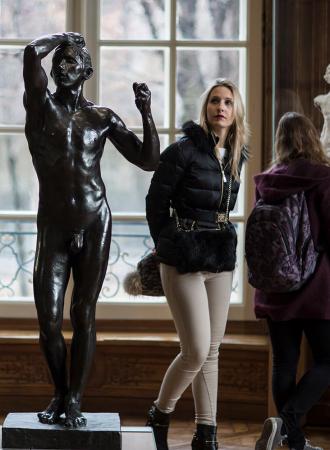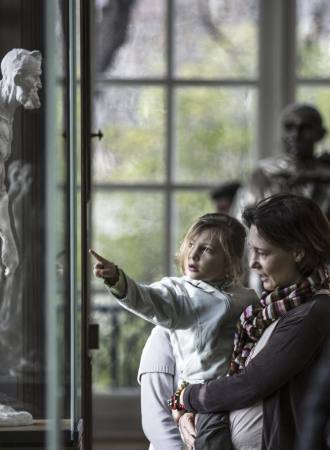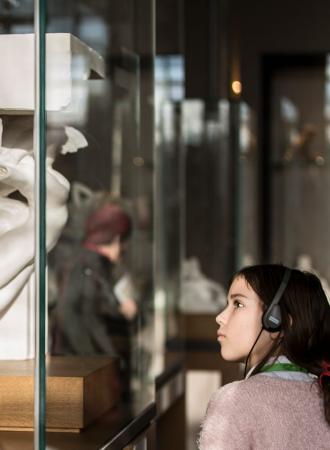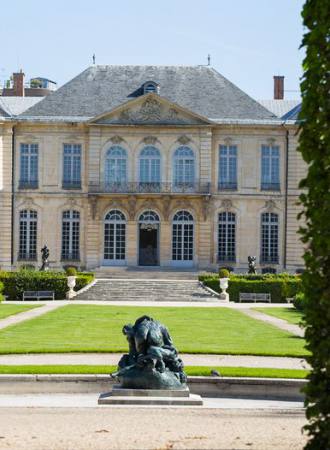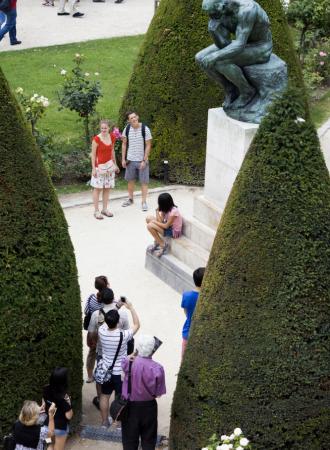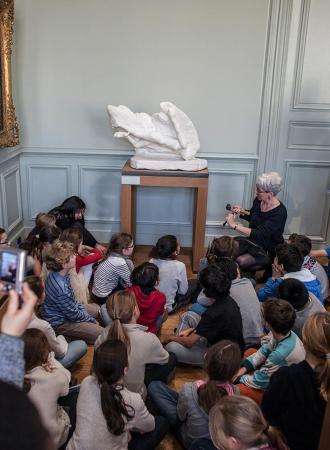Search the site
In⸱visible Bodies
An Investigation into Balzac's Dressing Gown
In autumn 2024, the Musée Rodin will showcase a little-known piece from its collections: Auguste Rodin’s Study for Balzac's Dressing Gown. Drawing on a series of sculptures from the museum’s collections, 19th-century garments from the Palais Galliera and never-before-shown archives from the Institut de France, the exhibition titled In·visible Bodies conducts an investigation into Rodin’s search for a body for Balzac, centred on his singular piece, Dressing Gown. This enquiry is a prelude to an exploration into the bodies – be they real, idealised, static or obscured – in 19th-century monumental statuary, which continue to populate our contemporary world today.
Sparking a dialogue between fashion and sculpture, and drawing parallels between the practices of tailor and statue maker, the exhibition looks at how the perception of bodies shapes the production of their much-idealised bronze likeness. It reveals how much the myth of Balzac writing in his dressing gown ultimately allowed Rodin to conceal beneath wide pleats a body rejected for its corpulence. In·visible Bodies invites the public to reflect on how bodies are represented in public spaces, and on how those representations need to be expanded today.
Vue de l'oeuvre
In search of a body
Commissioned by the Société des Gens de Lettres in 1891 to sculpt a monument to Balzac, Auguste Rodin embarked on a quest to get to know the novelist who had died nearly half a century earlier: from studying Balzac's image at the home of a collector of Balzacian relics in Brussels to searching for his body in the writer’s native Touraine, where he found a portly carter for a model, the exhibition retraces the steps of Rodin's investigation. It is a little-known fact that Rodin even found Balzac’s tailor and had him remake one of the writer’s redingotes in order to better understand his corporal physiognomy. Visitors will have the chance to see the garment, made to the actual measurements of his body.
A body concealed
Rodin then took on the challenge of representing Balzac in clay and plaster over four years. The reaction of his contemporaries – for whom a great man of bronze ought not to be represented as short and plump – prompted him to look to the image of Balzac writing in his dressing gown and hide his body beneath the pleats of a large robe. A plaster cast of an actual dressing gown, made around 1896-97, was Rodin's solution to the search for a visual aid that could reconstitute the idea of Balzac, for want of an exact representation of his body. The extraordinary Study for Balzac's Dressing Gown, which is the subject of the second part of the exhibition, presents the sculptor’s journey towards an idealisation of the body and provokes questions about the current challenges concerning fatphobia and the marginalisation of bodies that deviate from the “norm”.
Bodies that matter
The exhibition ends by juxtaposing the statue of Balzac, completed in 1898 and immediately rejected by the Société des Gens de Lettres, with a work by contemporary sculptor Thomas J. Price depicting an anonymous Black woman in a tracksuit. On the one hand, a Balzac idealised yet hard to grasp by those who commissioned it in the late 19th century; on the other, the monumental celebration of an anonymous woman, the symbol of a new kind of diversity in 21st-century public statuary. Taking as its starting point the process of the creation of the Monument to Balzac, In·visible Bodies will spark a broader reflection on the changing representations of the body in public spaces.
Vue de l'oeuvre
recreation of a cast for « Study for Balzac's Dressing Gown »
Follow the experiment to recreate the casting of the mysterious Study for Balzac's Dressing Gown , led for the In·visible Bodies exhibition.
This approach allowed us to test hypotheses regarding the techniques employed by Auguste Rodin's workshop. This reconstruction method, drawn from the field of archaeology, sheds new light on Rodin's innovative practices, revealing a creative process in successive stages.
The experimental archaeology project took place in June 2024 on the premises of the Rodin Museum in Meudon.
(French and English subtitles available)
The exhibition is curated by Marine Kisiel, curator of the 19th-century fashion department at the Palais Galliera, Musée de la Mode de Paris, and Isabelle Collet, chief curator, head of the scientific department and director of collections at Musée Rodin
| An exhibition organised with special collaboration from the Palais Galliera, Musée de la Mode de Paris, and with the support of the Institut de France. |
|

|
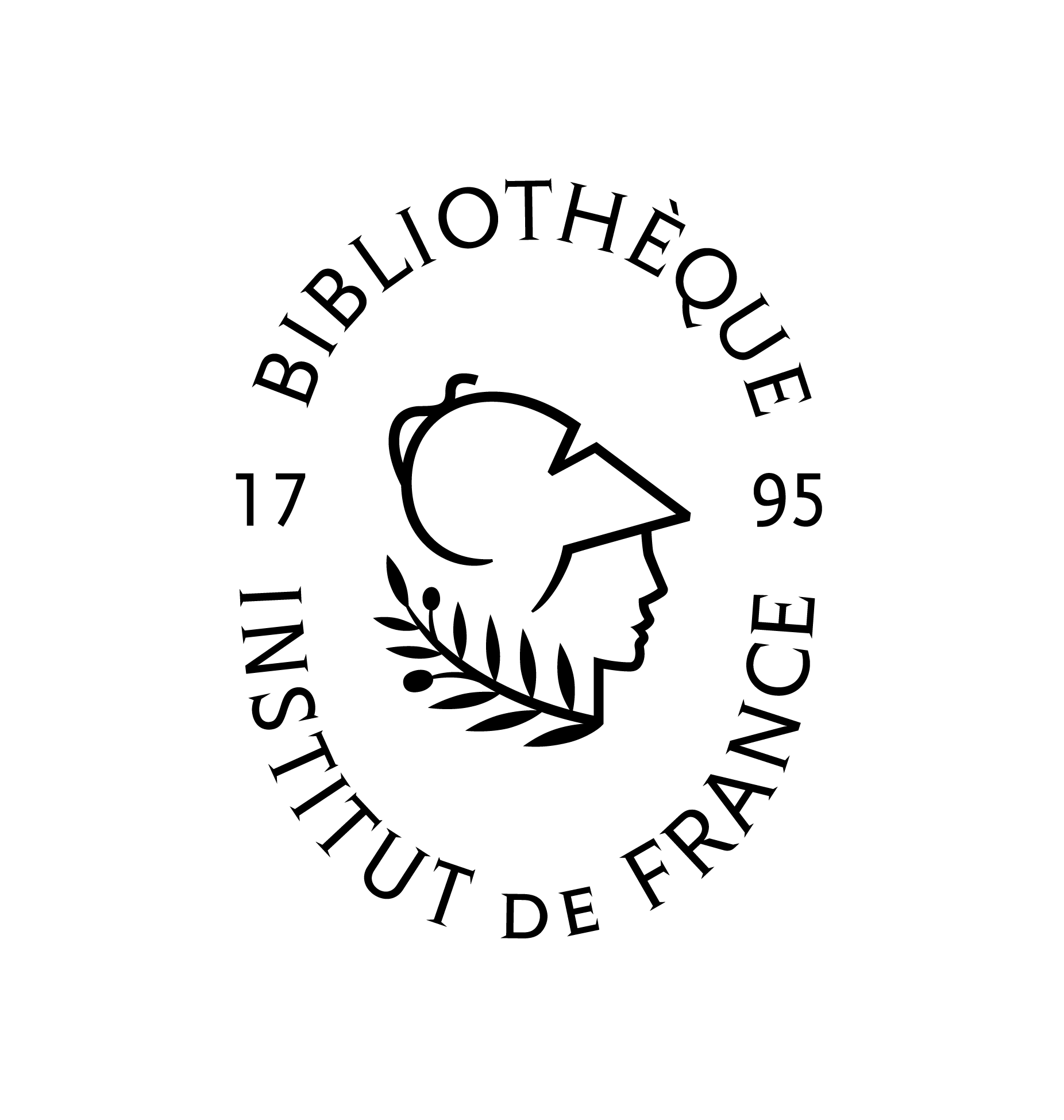
|
PARTNER MEDIA OF THE EXHIBITION
 |
|
|
Around the exhibition
Book my ticket onlineBuy tickets for this activity
Exhibition(s) location(s)
Musée Rodin
77 rue de Varenne
75007 Paris
Dates
From 15 October 2024 to 2 March 2025
Opening times
From 10 am to 6.30 pm. Last admission at 5.45pm.
The Rodin Museum is closed on 25 December and 1 January.
Price(s)
Full price : €14
Additional information
You are
A group of ten people or more ?
Book a group visit.
Teacher ?
Take a look at our visits for young people and our training courses for teachers.

